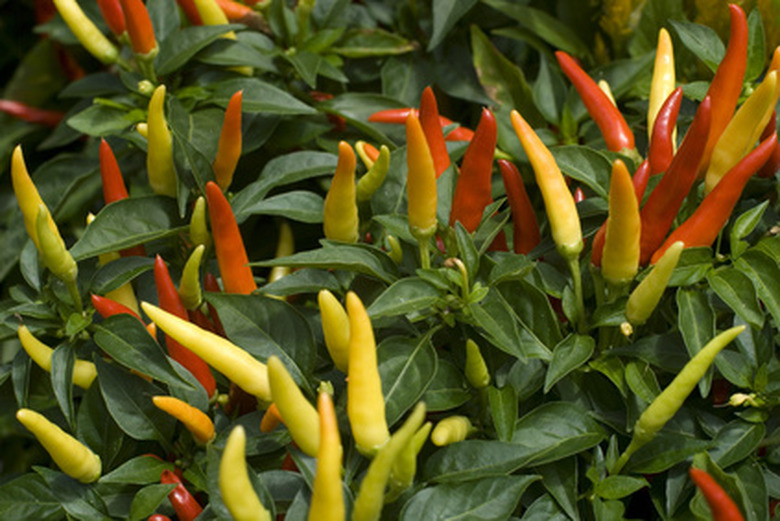Life Cycle Of A Chili Plant
Chili peppers were discovered by Spanish explorers in Central America, Mexico, Peru and Chile and have become a popular ingredient in many cuisines. They are known in India as chillies, in Spain as chili and in the United States as chile peppers. Hundreds of varieties exist and vary in their size and intensity of flavor. Popular varieties in the United States include Anaheim, Habanero and Red Chili.
Germination
Chili plants are started as seeds about six weeks before the last expected frost. Grown in a sterile starting medium, they germinate best at temperatures between 70 to 85 degrees Fahrenheit. Placing the starting tray on a heating pad or the top of the refrigerator or dryer can hasten germination.
- Chili peppers were discovered by Spanish explorers in Central America, Mexico, Peru and Chile and have become a popular ingredient in many cuisines.
Growth and Flowering
Chili peppers develop dark green foliage and reach 2 to 3 feet high, depending on the variety. They produce small, white flowers mid-summer.
Fruit Production
The plants develop fruits about two weeks after flowering. The flower petals fall off the plant and a small, green fruit develops. Chili peppers may be harvested when green or red and are often canned or dried. They vary in intensity, depending on seasonal conditions and variety. Long, hot, dry summers produce the hottest peppers, according to University of Illinois Extension.
- Chili peppers develop dark green foliage and reach 2 to 3 feet high, depending on the variety.
- They produce small, white flowers mid-summer.
Considerations
Chili peppers are somewhat particular about growing conditions. They need warmth and an even source of moisture. Chili peppers should be planted when soil temperatures are consistently above 65 degrees Fahrenheit. Black plastic and mulches are often used to warm the soil. They may drop their flowers and not produce fruit when temperatures are hot (above 85 degrees Fahrenheit) and windy.
Uses
Chili peppers are rarely eaten alone because of their fiery, pungent flavor. Instead, they are most often combined with other ingredients to flavor salsas and sauces. Chilis are used in Mexican, Indian and Asian dishes, among others.
- Chili peppers are somewhat particular about growing conditions.
- Chili peppers are rarely eaten alone because of their fiery, pungent flavor.
